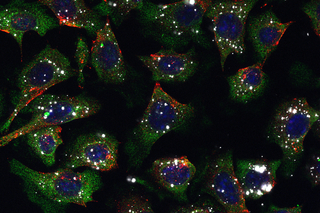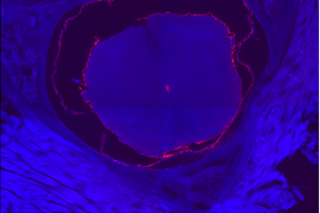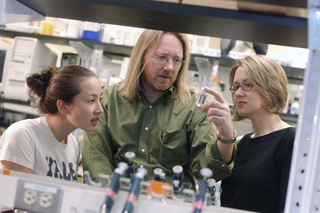Our Research
Research in the Saltzman Lab is motivated by the desire to create safer and more effective medical and surgical therapies. We focus on biomaterials, tissue engineering, drug delivery, and nucleic acid delivery. Our group has developed technology based on the use of biocompatible polymer materials for the controlled delivery of drugs, proteins, and genes. We have also developed polymer materials that influence the growth and assembly of tissues.
We seek to sustain a collaborative research environment, in which all laboratory members can reach their full potential. We are committed to training a new generation of chemical and biomedical engineers. We believe in providing a stimulating and collaborative environment that promotes the free exchange of ideas and encourages creative blending of technology and modern biological science.
DRUG AND GENE DELIVERY
The practice of medicine has changed dramatically in our lifetimes, and even greater changes are anticipated in the next 20 years. Drug delivery is one area of substantial progress. Drugs have long been used to improve health and extend lives, but several new modes of drug delivery, which were made possible primarily through the work of biomedical engineers, have entered clinical practice recently. In addition, biomedical engineers have contributed substantially to our understanding of the physiological barriers to efficient drug delivery such as transport in the microcirculation and drug movement through cells and tissues.
Still, with all this progress, many drugs—even drugs discovered using the most advanced molecular biology strategies—have unacceptable side effects. Side effects limit our ability to design drug treatments for cancer, neurodegenerative, and infectious diseases. Our laboratory is working on alternate strategy for drug delivery, which is based on physical targeting, or placement of the delivery system at the target site.
We are currently working on the following projects:
- Biodegradable Contraceptive Implants from Poly(ω-pentadecalactone-co-p-dioxanone) [poly(PDL-co-DO)], in collaboration with FHI 360, and supported by subcontracts from USAID.
- Targeted correction or replacement of the human CFTR gene, with Marie Egan and Peter Glazer, supported by NIH and the Cystic Fibrosis Foundation.
- Multifunctional skin-adhesive nanoparticles for cancer preventation and therapy, with Michael Girardi.
- New platform delivery systems for fetal therapy, with David Stitelman, supported by NIH
- Nanoparticle targeting of endothelial cells for organ transplants, with Jordan Pober, supported by NIH.
- Nanoparticles with anti-seed PNAs targeting multiple oncomiRs for brain tumor therapy, with Raman Bahal.
TISSUE ENGINEERING
Tissue engineering is a new field of inquiry, defined about 30 years ago, but it is emerging as an option for certain patients. The field has grown rapidly from definition to the production of clinical products. Tissue engineering combines knowledge from the biological sciences with the materials and engineering sciences to develop new approaches to repair tissues, and to develop replacements for tissues. Tissue engineering thus involves a combination of disciplines to achieve new therapies and, in some cases, entirely new approaches to therapy.
We are currently working on the following projects:
- Tissue engineering of vascularized skin replacements, with Jordan Pober, supported by NIH.


